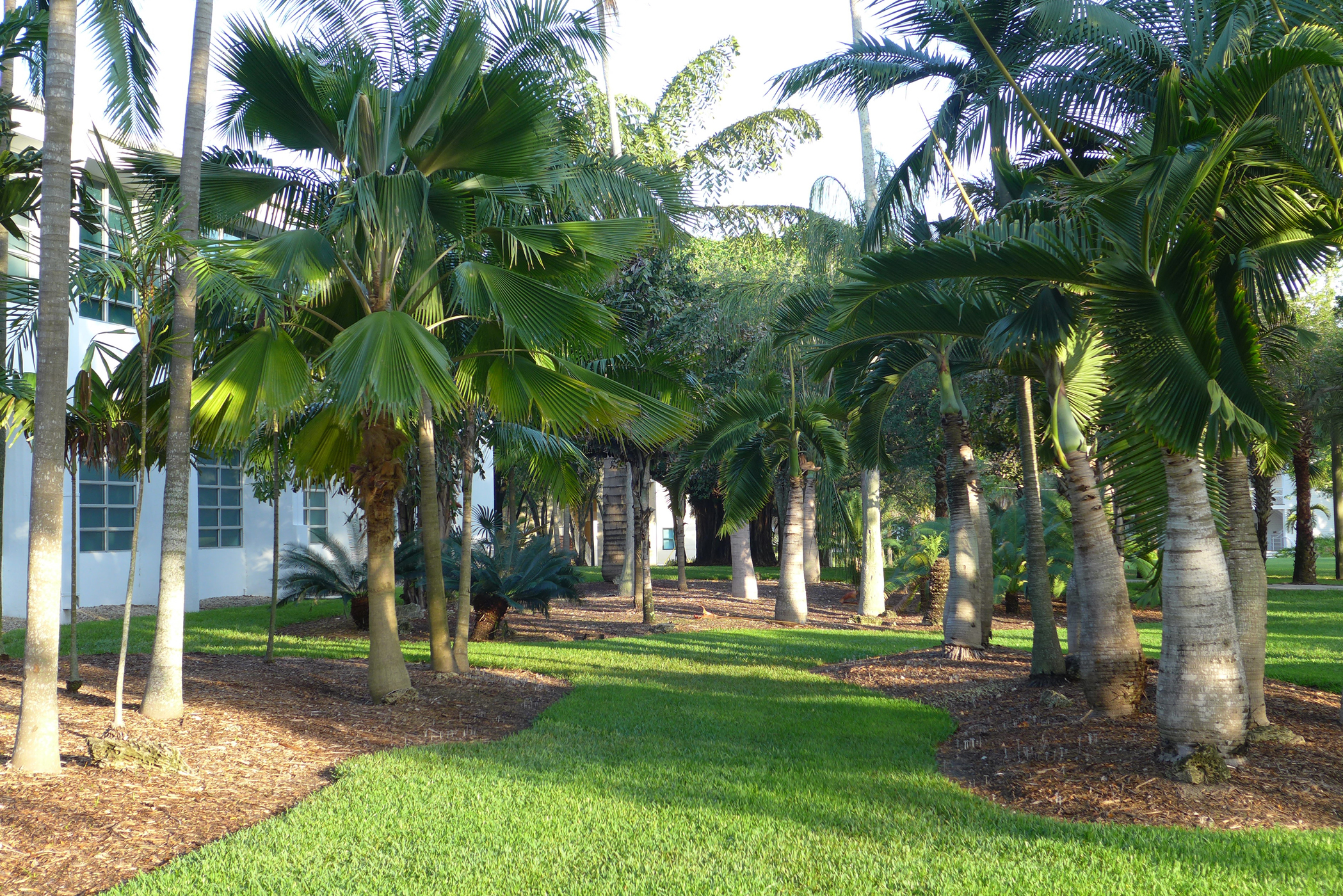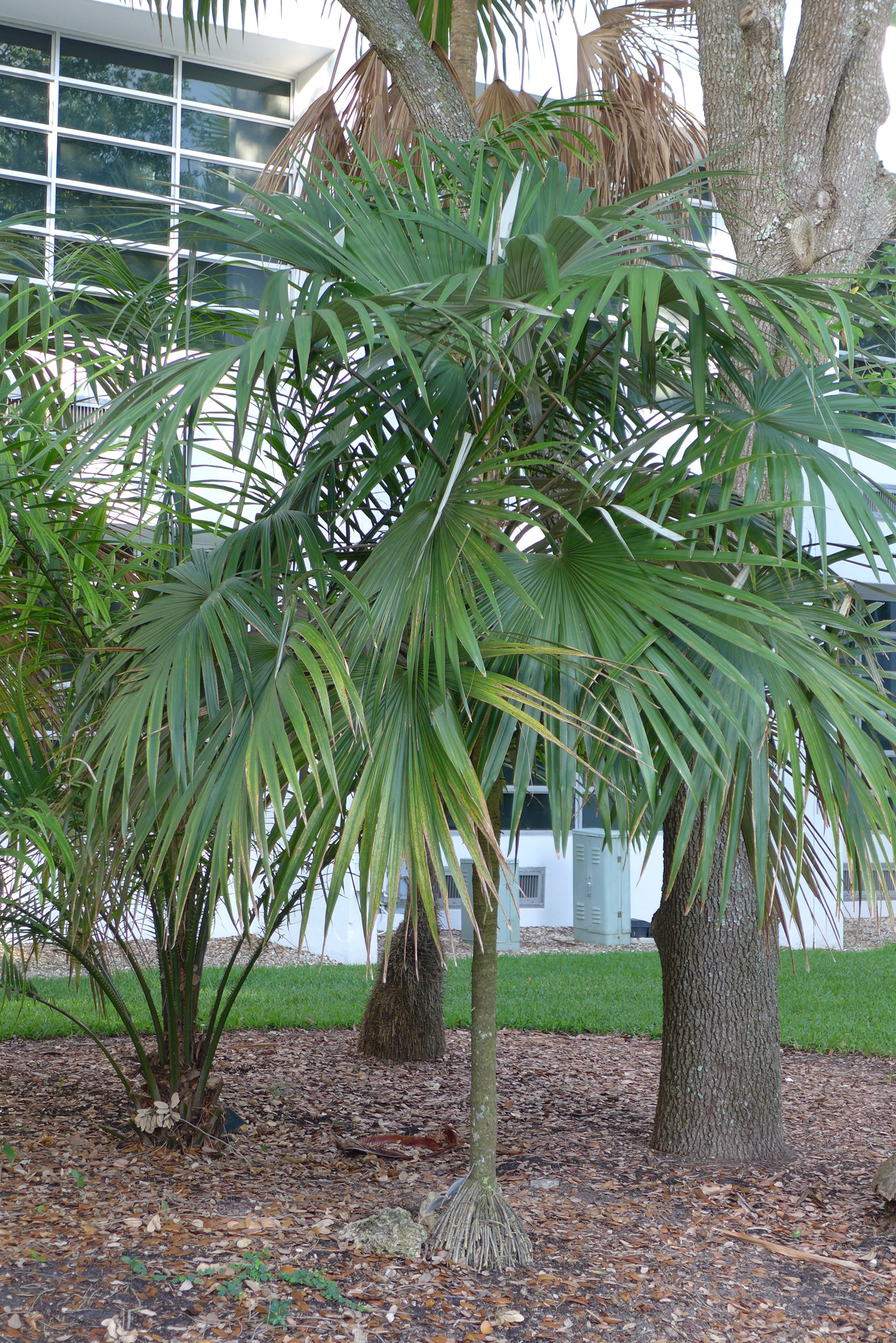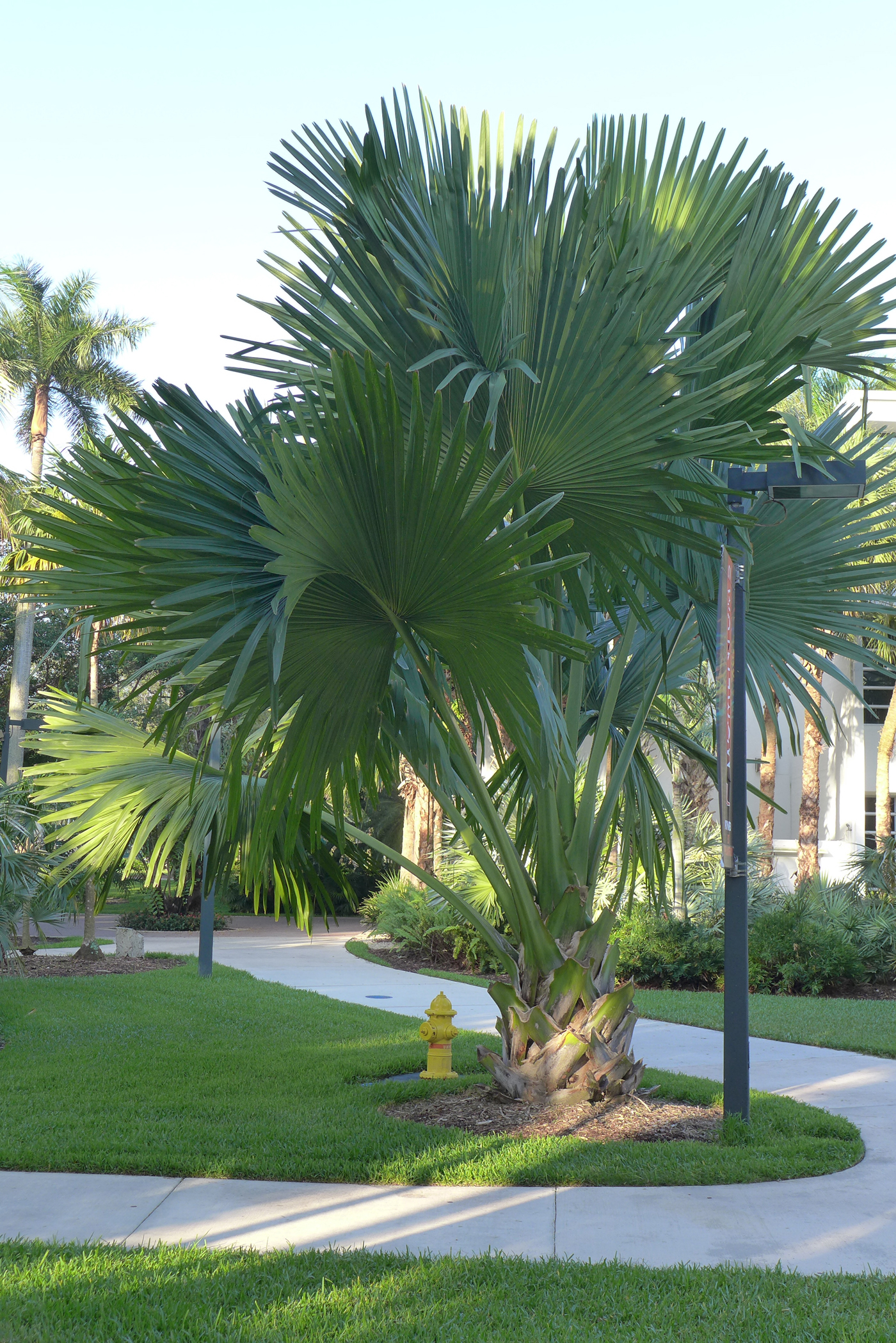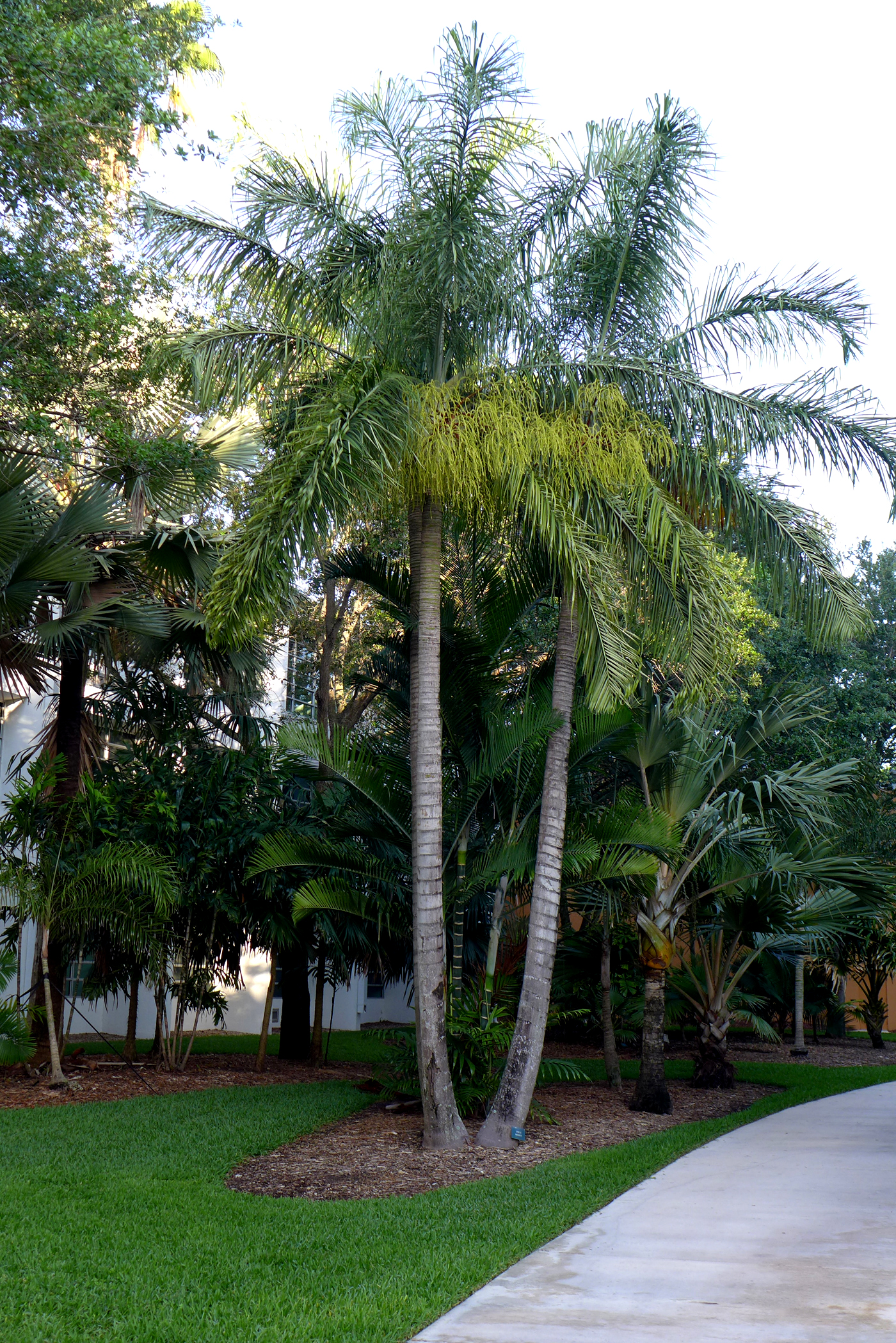In 2014, participants in the IPS Biennial in Miami, Florida, USA, visited some spectacular palm collections in South Florida, but one hidden gem that was not on the Biennial itinerary is the Palmetum on the University of Miami campus. The University of Miami Palmetum was established in 1999, as part of then-President Edward T. Foote II’s “Campus in a Garden” campaign, during which the landscaping throughout the campus was enhanced. The Palmetum is an oasis of tropical beauty in an already lush and leafy campus. Its plantings, ca. 75 species, are arranged in well-designed beds, often with geographic themes. Some palms are one-of-a-kind specimen plantings or design focal points. The layout of the Palmetum is intimate and immersive: walkways pass through many of the plantings, giving visitors opportunities to touch the leaves and admire the stems.
There is a native Florida group featuring Sabal palmetto, Rhapidophyllum hystrix, Serenoa repens, Pseudophoenix sargentii and Leucothrinax morrisii. Across the path, there is a fine stand of Coccothrinax, including large, mature C. crinita, C. borhidiana, C. argentata, and others. The Caribbean theme is expanded with Zombia antillarum, Aiphanes minima, and Pseudophoenix vinifera.

A grouping of palms from the Indian Ocean and Pacific Islands features Hyophorbe lagenicaulis and Pritchardia pacifica.
Specimen highlights include Copernicia baileyana and C. gigas, a large grouping of Kerriodoxa elegans growing in the shade of oak trees, the elegant Ravenea hildebrandtii, several large Cryosophila stauracantha, and even a Calamus species ascending the trunk of an oak. Impossible to miss is the massive Corypha umbraculifera next to a sidewalk. It is just beginning to form an above-ground trunk and soon will overtop the adjacent lamp post. An outdoor seating area is dominated by a large Sugar Palm, Arenga pinnata. A towering Sabal mauritiiformis stands nearby. A sunken area, protected by an embankment and shaded by large oaks, holds a blooming specimen of Licuala peltata var. sumawongii.
Since the Palmetum was established, the palms have grown vigorously, many reaching maturity, and even flowering and fruiting. A few have been lost. In the intervening years, many of the labels were damaged or lost, but in 2014, a grant from the IPS Endowment Fund was awarded to the UM’s John C. Gifford Arboretum Director, Mr. Steve Pearson, for the express purpose of replacing and enhancing the signs in the Palmetum. Interpretive signs will make the visitor’s experience more enjoyable and informative and will remind UM students and faculty of the unique tropical jewel that graces their campus.
If you’re traveling to Miami, be sure to take time to see the University of Miami’s Palmetum. The Palmetum is freely accessible but is best visited on weekends or when school is not in session – that’s when parking is readily available. It is located around the Dooley Memorial Classroom Building and adjacent buildings (follow the signs to the Cosford Cinema). Contact: Steve Pearson, sdpearson@bio.miami.edu, for more information.
——————–
Text and Photos by: Scott Zona




